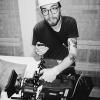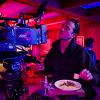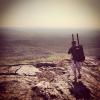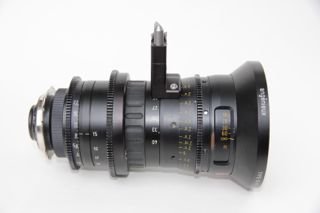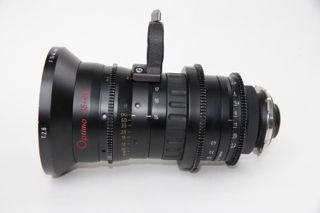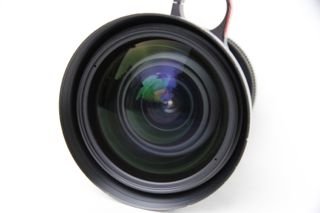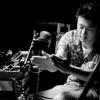Search the Community
Showing results for tags 'Alexa'.
-
Has anyone out there tested the ARRI Alexa XT's Open Gate mode (1.55:1) on 2x Anamorphic Lenses verses a Dragon at (3:2) with Ana's for close to a 3:1 output ratio with cropping? Or even just the two against each other at all. I cant find anything online at all. Any thoughts on this would be appreciated. Cheers! Karl Janisse
-
- Anamorphic
- Arri
- (and 4 more)
-
The latest music video I shot for Nause. It's a completely unscripted story/event. Shot on Alexa with Ultra Prime LDS and Optimo 28-76 + three Nikon D800 with nikon-lenses. https://vimeo.com/91797235 Thanks
-
- music video
- alexa
-
(and 4 more)
Tagged with:
-
I have the opportunity to purchase a used Arri D-21 from a local rental shop for $6000. I have heard that the D-21 footage has a unique film like quality that surpasses most cameras, even the Alexa. Although it's dynamic range is limited to 11 stops and low lightcapabilities seem to be quite poor. Can those of you who have used the D-21 please share your experiences.
-
Sharing a short film we just posted online, just in time for the NCAA tournament. I shot Alexa 4444 2k, superspeeds wide open most of the time. Some of our influences were a little Savides meets Soderbergh with a dash of Fincher. My friend Andrew Lewis Directed, Nice Dissolve in Brooklyn did the Color. Kyle Fasanella on steadicam. A confrontation with an old rival makes Zack Woods a media sensation hours before leading his underdog team into Game One of March Madness. Let me know what you think and enjoy!
-
Hi Folks, I didn't go to film school. Most of my training came from internships in middle and high school (also my family was in local television) and those connections worked into jobs when I got out of school, so I'm not familiar with the film school scene, in fact, many of my mentors in the business advised me that unless I had a lot of money and could afford UCLA (this was 1978, by the way) or something equivalent, not to waste time and money on film school, especially since I had already had a good bit of hands on training during my volunteer work. It worked out for me pretty well , but that was a different time.Throughout the years I've done some consulting and community college level teaching, but never on a film school level until a year and half ago when I taught a cinematography class for the New York Film Academy in Celebration, Florida. I had a blast, great students and I got to work with some high caliber folks and for me the coolest part was I got to work with Arri S 16mm cameras that I thought I would never see beyond a museum again. Tri X Reversal, it brought back memories of high school football games and early 60's newsreels, my childhood and early adulthood.After reading up on NYFA both pro and con, I got the impression that many were questioning the wisdom of teaching students on an "old clunker" when the big guys are shooting with RED's and Alexa's. Fair enough, but you have to remember, this level of student, high school or early college is not going to start out with one of those anymore than I did with a Arri SR or Aaton Prod.You also have to take into consideration the number of students that aren't interested in becoming cinematographers. About two thirds of my students were wanting to be actors, directors and producers and they certainly weren't going to take it to the Panavision level. So here are the options for this level of student that I see. HD Prosumer or DSLR: I would lean toward either DSLR or perhaps some of what Black Magic is offering. This is where I have to criticize NYFA on their choice of the Panasonic prosumer grade cameras they use. Great cameras, but they're ENG and no matter how much you play with camera tape markings on the lens barrel,it's still not a proper lens for that. I offered the students the option of using that or the MF numbers on the monitor, as most AC's I've seen these days follow the cam op via a small flat screen monitor.Now DSLR's are great, but here again, they're not designed for a Hollywood type film crew operation unless you spend a good deal of cash on camera cages and follow focus attachments. This would be economically impractical in this type of situation, I could imagine the nightmare of trying to keep up with that many DSLR kits students were sent out with on the Disney backlot. High school students and even the adults in that type of situation need to keep the number of items in the field small,and the many pieces of tinker toy type stuff that goes with DSLR's would be a nightmare to contend with. Then you have super 8 and 16mm. I love super 8 and I could see it being used on a basic "primer" type of project, but beyond the avant garde scene, yuppie weddings and a certain type of look, its not really such a good training format either,It's best reserved, in my opinion for the "intimate" hand held, home movie or retro doc look, which is exactly what we're seeing the industry currently using it for. Then you have the old stand by, tried and true 16mm "clunkers". I love these things, they're my classic muscle cars, what I cut my teeth on, but it disturbed me to see so much precious film footage being wasted on exposure tests and workshops.Moreover , such a volume of labwork was a nightmare for scheduling projects, These days, especially for a film student on a budget, 16mm film stock is like oil and seeing it used like that is almost like driving a Hummer to the corner store. Check out this video:http://www.youtube.com/watch?v=SYADhAZsPNA Now let's say a film school has a fleet of "old clunkers". They're still good for training the basics on, but if,say you converted half of the fleet to a digital hybrid, the student could learn basic composition,exposure, work flow and camera crew operation and once they've mastered that, then they can move on to shooting their projects with real film cameras, if that's the direction, if not, they will still be prepared for the film type work flow that is currently standard procedure in the industry, rather than pick up bad habits from being trained on an ENG camera. P and S Teknik is already doing this with Arri 16 SR 3's, offering a digital mag and as I understand someone else is working on a digital super 8 cartridge. What are your opinions on this? Marty Hamrick Semi retired cameraman Oshawa, Ontario
-
I've asked this on numerous forums, but I'm trying to get the widest opinion possible. Working freelance dop/camera at my age, I feel the need to own the camera to obtain most of my jobs. Sucks, but oh well. A lot more people rely on the DOP/Camera op to own their own gear than spending extra on rental. Which is fine. I need a camera anyways. I'm in need of a professional cinema camera that wont let me down and will last me years to come. I shoot music videos, commercials, and films., a lot of times smaller productions where I'm working solo with limited resources. Some things with big budgets and great lighting, sometimes very low budget with limited lighting. I have a budget, but I can break it if its worth it. Being young still, it would be the biggest expense. Other may think I'm crazy. But I need it for business. To make money and not just own a camera to be a big shot. Sony F5 + R5 - $35,000 Sony F55 - $28,500 Scarlet + Dragon + Motion Mount - $35,00 Epic + Motion Mount - $35,500 *Epic + Dragon + Motion Mount - $45,000 *Arri Alexa HD - $50-65,000 *WAY over my budget, but may be worth it? The Sony F55 seems to be the cheapest. Has great features (Global Shutter), but no raw, unless paired with R5 recorder bringing it to about $37,000. In a way, these cameras are almost the same price. Give or take a few. Id love to get the cheapest one and get accessories for it, which id still need. PROS: Sony F5 + R5 - high frame rates, raw Sony F55 - Cheapest, global shutter, high frame rates Scarlet + Dragon + motion mount - High DR, global shutter, raw, most popular choice Epic + Motion Mount - High frame rates, global shutter, raw, most popular choice Epic + Dragon + Motion Mount - High frame rates, High DR, global shutter, raw, most popular choice Arri Alexa - Best overall image?, raw?, high frame rates? CONS: Sony F5 + R5 - No global shutter, not as well known :mellow: Sony F55 - No Raw, not as well known :mellow: Scarlet + Dragon + motion mount - Noise, Limited frame rates, many user problems <_< Epic + Motion Mount - Noise, many user problems <_< Epic + Dragon + Motion Mount - Noise, many user problems, High in price! :( Arri Alexa - unknown about arriraw, no global shutter, HIGHEST in price :angry: Id get the Sony, F55 or F5 + R5, but it isnt that well known. Isnt as in demand as I hoped for. If its all quiet and not used for cinema as much as broadcast, Id probably want to go a different route like RED as they are well known and used in cinema primarily. But performance is a let down.
- 29 replies
-
- sony f5sony f55
- r5 recorder
-
(and 6 more)
Tagged with:
-
Hi Guys, I've got my first shoot on the Alexa coming up next week, and as circumstances prevent me from being able to run exposure tests on the camera beforehand, I was wondering about using the camera's false colour feature. We'll be shooting in LogC No-Matrix, and I'm wondering what colour I'd want to see on caucasian skin? Is it pink for properly-exposed Caucasian skin? Or is pink just for the highlights on caucasian skin? Cheers, Mark
-
New top/steadicam plate and AKS 1st AC load plate for Arri Alexa and Red. 100% made in the USA. Links to pics attached.: co-creator: Joe Christofori thanks to Rule Boston Camera for camera / field testing links to pics https://twitter.com/SawmillCinema/status/373283304013049856/photo/1 http://t.co/kDA63zAxL5 Mike Sutton mike@sawmillcinema.com twitter: @sawmillcinema twitter: @MNS1974
-
https://vimeo.com/70679379 The majority of this music promo was shot on an Arri Alexa 4:3 in 2K ProRes using Panavisions C-series and G-series Anamorphic primes with some additional photography shot on a RED MX with Panavisions Xtal Express Anamorphic primes. The main visual references the director and I discussed were photographer Gregory Crewdson's work and the films of Wes Anderson (shot by Robert Yeoman) so we were trying to achieve a surreal atmosphere with a vibrant colour palette. For the main location I used Lee Medium Blue Green gel on most of my background sources (a combination of daylight balanced kinoflos and smaller HMI cinepars) while keeping the keylight neutral (usually a combination of tungsten jemballs warmed slightly on the dimmer). I kept the camera at 3200K and 800asa and the stop was usually a T4. I hung 2 x jemballs w/500w bulbs above the table and skirted them to contain the spill. Opposite camera there was a Kinoflo Flathead hanging just above the frame that worked as a backlight for the lead actress, and this was supplemented with additional Flatheads on the floor as 3/4 backlight where necessary. Depending on our angle of view I'd use smaller Cinepars and 4x4 kinos bounced into the ceiling to add some colour to the background. For a flicker effect I had 2 x redheads running through a a flicker box and pushing through a frame of Muslin and for the sweeping spotlight I used a source 4. For the shot of the girl looking at herself in her bedroom mirror at night I used a single 4ft x 4tube kino just outside the window to key her and used a 575w HMI Cinepar with a spot bulb sitting on the floor just outside the window to add a slash of moonlight across the floor. A handheld HMI pocket par sat just out of frame right to flare the lens. For the warmer coloured scenes inside the dance rehearsal studio at night I used the Xtal express lenses for a softer, more dreamlike feeling and kept the shooting stop at T2.8 which enhanced the softer aberrations of the lenses and made a nice contrast between the C&G series. A pair of 2k's and another pair of VNSP parcans, all gelled with CTS, pushed through the window to work as a backlight and I used the ambience from the room as fill. For close ups I supplemented the light with some smaller Kinos again with tungsten tubes and CTS. There's a couple of lighting plots below (designed in the Lighting Designer App - can't recommend this highly enough!) and a few BTS photos from the unit stills that give you a sense of the lighting rig in the main location. Theres also a brief clip showing the Dolly/Lighting Rig we used for one of the shots here https://vimeo.com/71200843
- 5 replies
-
- 1
-

-
- Anamorphic
- Alexa
-
(and 4 more)
Tagged with:
-
6 year old Angenieux Optimo 15-40mm T2.6 Zoom Lens in perfect condition. This is my lens, privately owned, not parked at a rental house. In Los Angeles. $39,995. contact me at lkarman5@verizon.net if interested.
-
Digital cameras can do some amazing things nowadays considering where they were just even five years ago. One thing I sometimes struggle to understand is how these newer cameras with 13+ stops of dynamic range are actually quantizing that information in the camera body. One thing we know from linear A-to-D quantization is that your dynamic range is a function of the number of bits of the converter chip. A 14-bit ADC can store, at best (and ignoring noise for the moment), 14 stops of dynamic range. However, when we do introduce noise into the mix (sensor, transfer charge, ADC, etc.) and linearity errors, there really isn't 14 meaningful stops of dynamic range. I did a lot of research on pipeline ADCs (which I believe are the correct type used) and the best one I could find, as defined by the measured ENOB (effective number of bits), was the 16-bit ADS5560 ADC from Texas Instruments; it measured an impressive 13.5 bits. If most modern cameras, Alexa especially, are using 14-bit ADCs, how are they deriving 14 stops of dynamic range? I read that the Alexa has some dual gain architecture, but how do you simultaneously apply different gain settings to an incoming voltage without distorting the signal? A pretty good read through regarding this technology can be found at this Andor Technology Learning Academy article. Call me a little skeptical if you will. Not to pick on RED, but for the longest time, they advertised the Mysterium-X sensor as having 13.5 stops (by their own testing). Of course, many of the first sensors were used in RED One bodies, which only have 12-bit ADCs. Given that fact, how were they measuring 13.5 in the real world? Now, with respect to linear to log coding, some cameras are opting for this type of conversion before storing the data on memory cards; the Alexa and cameras that use Cineform RAW come to mind. If logarithmic coding is understood to mean that each stop gets an equal number of values, aren't the camera processors (FPGA/ASIC) merely interpolating data like crazy in the low end? Let's compare one 14-stop camera that stores data linearly and one that stores data logarithmically: In a 14-bit ADC camera, the brightest stop is represented by 8192 code values (16383-8192), the next brighest is represented by 4096 code values (8191-4096), and so on and so forth. The darkest stop (-13 below) is only represented by 2 values (1 or 0). That's not a lot of information to work with. Meanwhile, on our other camera, 14-stops would each get ~73 code values (2^10 = 1024 then divided equally by 14) if we assume there is a 14-bit to 10-bit linear-to-log transform. As you can see here, the brighter stops are more efficiently coded because we don't need ~8000 values to see a difference, but the low end gets an excess of code values when there weren't very many to begin with. So I guess my question is, is it better to do straight linear A-to-D coding off the sensor and do logarithmic operations at a later time or is it better to do logarithmic conversion in camera to save bandwidth when recording to memory cards? Panavision's solution, Panalog, can show the relationship between linear light values and logarithmic values after conversion in this graph: On a slightly related note, why do digital camera ADCs have a linear response in the first place? Why can't someone engineer one with a logarithmic response to light like film? The closest thing I've read about is the hybrid LINLOG Technology at Photon Focus which seems like a rather hackneyed approach. If any engineers want to hop in here, I'd be much obliged--or if your name is Alan Lasky, Phil Rhodes, or John Sprung; that is, anyone with a history of technical knowledge on display here. Thanks.
-
As a side project we have created a little free tool called "metavisor" to directly view and extract metadata of Arri Raw files inside your web browsers with simple Drag and Drop technology Link to metavisor: metavisor I would love to get some feedback from the pros here: What you think about the tool? What would you like to be improved? How important is viewing and export of metadata to you? Is the current tool with installation (Meta Extract) provided by Arri too cumbersome to use? What free webtool would you like to see concerning production / postproduction / vfx ? The tool is still in beta phase. We are also planning to extend the functionality to the other capture formats the Alexa supports, RED, Sony's cameras and connect the vfx/lens data information to our database and make it available to the digital workflow community. Also if you ever imagined a nice tool that everyone should be able to use for free in our industry - just drop us a line (metavisor@nablavfx.com). Usually people with good ideas and interesting problems are industry professionals ;) Big thanks to everyone giving some feedback ! We really appreciate your time. Jatha --- Announcing - metavisor - http://www.opendci.com/app/metavisor Extract Arri Alexa Raw metadata with this simple free web tool ! Quickly view metadata online of Arri Raw files (*.ari) inside your browser, with simple Drag and Drop. Download the metadata in csv or json format. -- Jathavan Sriram Co-Founder, CTO nablavfx R&D|3D|VFX h: http://www.nablavfx.com m: contact@nablavfx.com Google+: https://plus.google.com/104702076022464846295 LinkedIn: http://www.linkedin.com/company/3165753
-
Hi, I have a couple of questions for our next (student) short we will be shooting in the first half of April. At first we wanted to go 16mm (anamorphic), but it's quiet expensive for us. And wide angle anamorphic is a problem with 16mm. We're still thinking about it though. But it's probably going to be the digital way. Now the short is about half and half daylight and nighttime. Probably a bit more at daylight. We're thinking about renting a Red-epic since it's a lot cheaper (than an Alexa). But I'm a bit "scared" for the nighttime shots with the epic. We will be passing neon street lights, in car shots which can get pretty dark, etc. What do you think? Will it be ok? Second question is about post production. We love the (16mm) celluloid organic look, and specially for this film. We were wondering how this is professionally emulated/achieved. Are there a couple of ways? I add professionally since we were thinking about festivals etc. (I read somewhere that adding a random grainy look is okay for youtube videos but not for more serious stuff.) Thanks ahead,
-
Hi friends: I updated my Quickguide of the Arriflex Alexa for the new Sup 7.0.2. Here I leave you the link in case you need it: http://www.sauloliveira.com/index.php/en/working-material/134-quickguide-arriflex-alexa-sup-7 Best Regards Saul Oliveira Second AC Spain www.sauloliveira.com
-
https://vimeo.com/59217562 Footage from various shorts I've done in the past 2 years. Camera's used: Arri Alexa, Phantom Flex, RED Epic, RED M-X, RED One, Ikonoskop A-Cam DII, Canon C300, ...
-
- cinematography
- reel
- (and 5 more)
-
Hello everybody! My name is Nikolay Hristov and I'm young producer from Bulgaria. Currently I have on my disposal to manage 3 cameras ARRI Alexa (2 Alexa Plus and 1 basic Alexa). As the market in Bulgaria is not big enough I am looking to expand the business around Europe and I'm pretty sure I can offer one of the best prices on the market. This means around 30% lower tha the ordinary rental price in Europe. For example, fully equipped Alexa Plus + 6 lenses Ultra Prime≈ 5000 euro/week. Every offer will be personalized depending ot its specific requirements, lenght of the rental, etc. I can offer as well camera technician, for which Alexa expertthere will be additional charge. If you are interested, please contact me on my e-mail nikolay.h.hristov@gmail.com and I will get back to you shortly after that with details. Best regards, Nikolay Hristov
-
Hello everybody! My name is Nikolay Hristov and I'm young producer from Bulgaria. Currently I have on my disposal to manage 3 cameras ARRI Alexa (2 Alexa Plus and 1 basic Alexa). As the market in Bulgaria is not big enough I am looking to expand the business around Europe and I'm pretty sure I can offer one of the best prices on the market. This means around 30% lower tha the ordinary rental price in Europe. For example, fully equipped Alexa Plus + 6 lenses Ultra Prime≈ 5000 euro/week. Every offer will be personalized depending ot its specific requirements, lenght of the rental, etc. I can offer as well camera technician, for which Alexa expertthere will be additional charge. If you are interested, please contact me on my e-mail nikolay.h.hristov@gmail.com and I will get back to you shortly after that with details. Best regards, Nikolay Hristov


